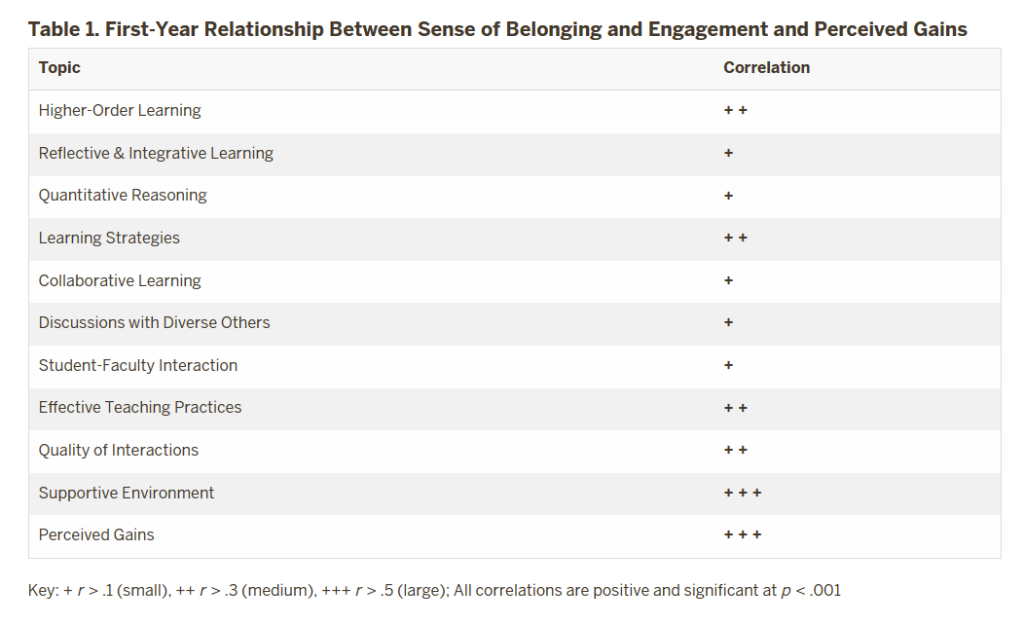11 Belonging interventions
What are belonging interventions?
 “Belonging” has become a popular buzzword among both academics and administrators, something somewhat intangible upon which success in higher ed can be presaged. However, there is mounting evidence that increasing students’ sense of belonging not only leads to better interpersonal experiences for those students and continued enrollment, but also can affect the students’ performance in their courses.
“Belonging” has become a popular buzzword among both academics and administrators, something somewhat intangible upon which success in higher ed can be presaged. However, there is mounting evidence that increasing students’ sense of belonging not only leads to better interpersonal experiences for those students and continued enrollment, but also can affect the students’ performance in their courses.
Consequently, if students feel as though they belong in your course and with their fellow classmates, they will be more likely to reach out, find connection, and work to succeed in the course. Therefore, it can be important to find ways to incorporate interventions into your class that build and foster a sense of belonging for your students.
How can you incorporate belonging interventions in your course?
There are numerous ways one can foster a sense of belonging in your course. Here are some examples that come from courses at UI:
- Metacognition journals. in MATH:1005, students are tasked with reflective activities in a metacognition journal, where they ponder and write on their experiences learning, both on their own and in their group work. They share their experiences with their peers, which allows for connection and growth as students bond over shared experiences and perspectives.
- Course readings. in CS:1100, students are assigned the book Algorithms of Oppression: How Search Engines Reinforce Racism by Safiya Umoja Noble, and then do group work in the classroom where they discuss how technology and Big Tech can reify and perpetuate prejudice. These conversations have led to an increased cohesion in the student cohort and better understanding between students.
What results can you expect from incorporating belonging interventions into your course?
The National Survey of Student Engagement (NSSE) has done research into the effects of building that sense of belonging and community. In their site linked here, they feature the following graph that delineates the effects of belonging interventions on first-year students:

As the table demonstrates, there are positive and significant correlations in many aspects of a course when students feel as though they belong. Therefore, as you incorporate specific interventions to increase your students’ sense of belonging, they will result in similar positive experiences and outcomes.
Courses at UI that have incorporated belonging interventions into their courses as listed above have seen a statistically significant increase in student outcomes. While these outcomes may have also been precipitated by other interventions, the importance of belonging in these courses remains significant.
Who can help if you’re interested in incorporating belonging interventions into your course?
If you are looking for more information on belonging, its importance in your course, and further readings, take a look at the Handbook for Teaching Excellence from the Center for Teaching at UI, where there is an entire section on belonging, its importance, and how to foster it in your course: Belonging and student engagement – Handbook for Teaching Excellence (uiowa.edu)
Another resource is Stanford University’s The Belonging Project, as their newsletter delves into ways belonging can help your course grow and improve.
If you would like to explore how you could use this in your course, please reach out to the Center for Teaching for assistance and guidance on how best to implement these activities.
